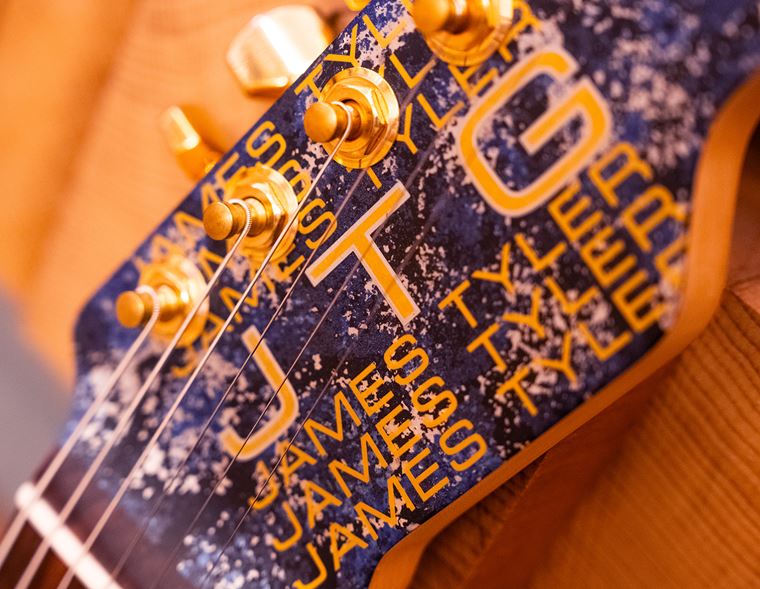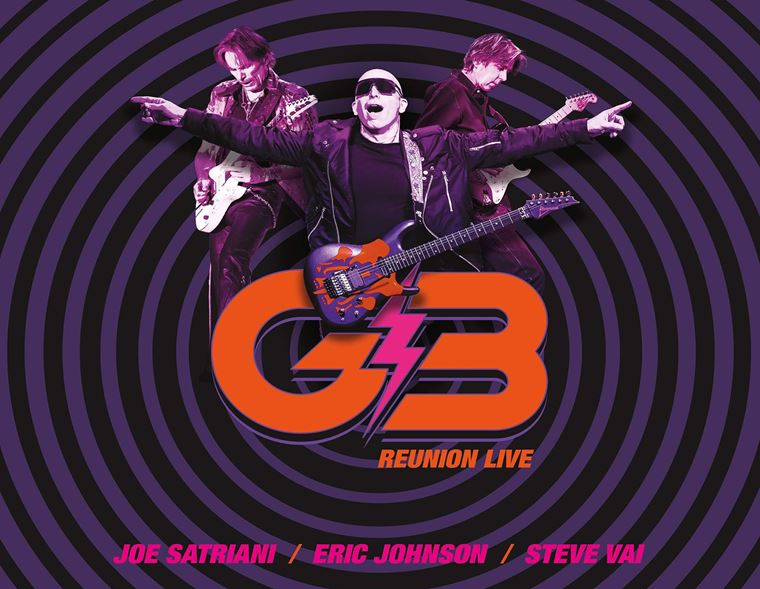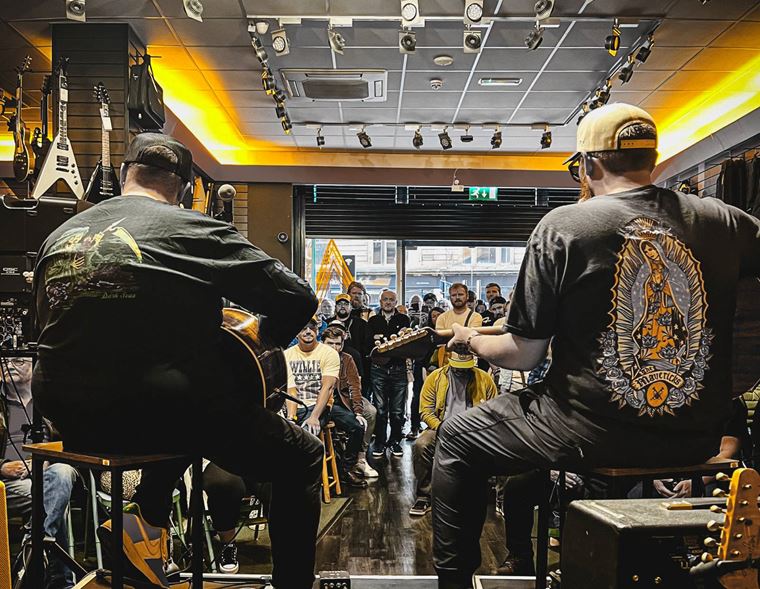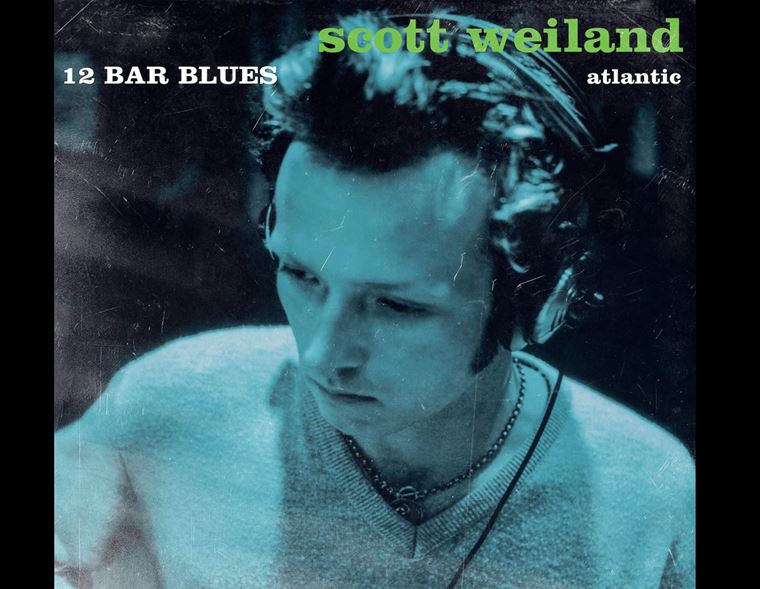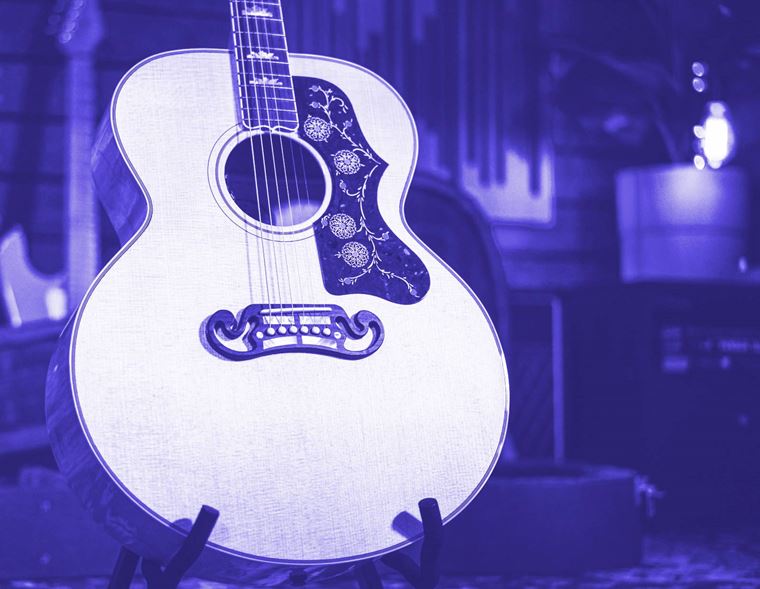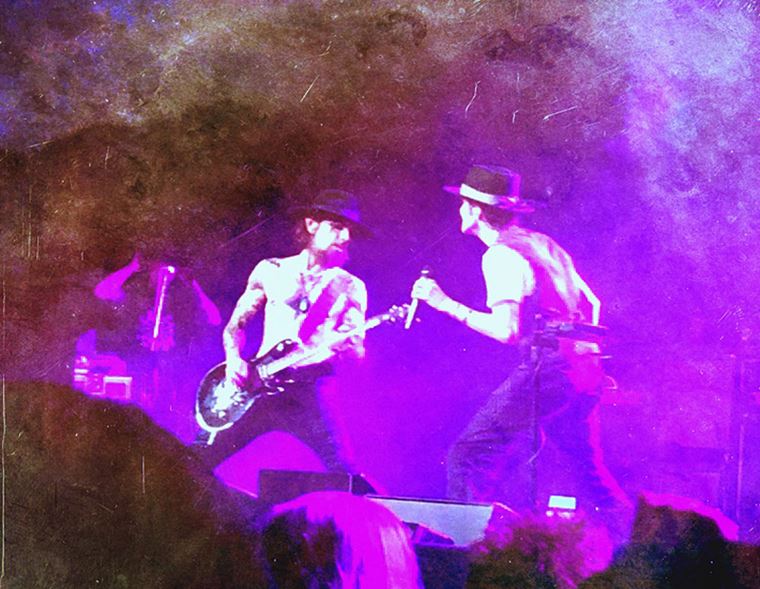NEW Gibson Custom Shop Acoustics
Published on 14 February 2024
Is it just me or are Gibson acoustics the most beautiful of them all?
Not just beautiful, they are also iconic and full of charisma. Whatever acoustic guitars you choose to play, there’s a part of you that wants a lush Gibson too, right?
Today, I want to dive slightly closer to three of the most famous Gibson acoustic guitar models - the Hummingbird, the SJ-200 and the J-185 - and check out some lovely historical reissues that are out there right now.
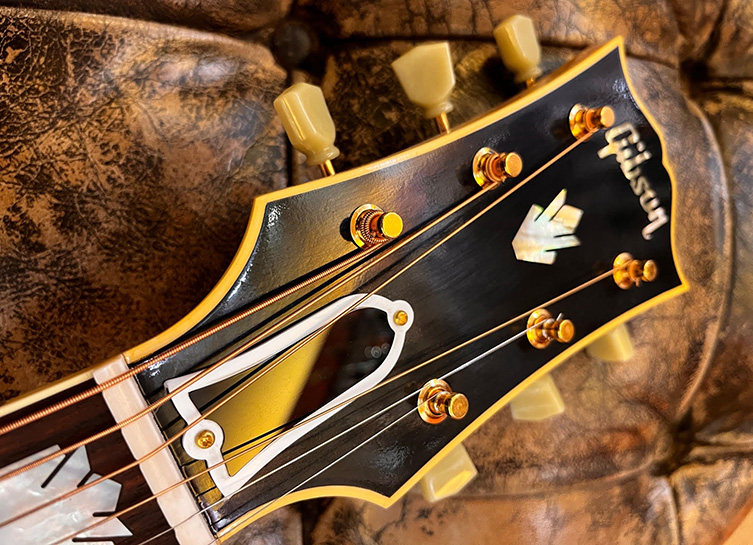
Contents
The Gibson Appeal
History and heritage play a large part in the attraction to Gibson guitars. Even a hundred years ago, their designs were being ‘borrowed’ by other brands. Gibson have been around since the dawn of mass-produced guitars, and only Martin & Co can really compete in terms of influence.
Between the two brands though, I think it’s fair to say that Gibson have not only been more clearly decorative & ornate, they’ve also created a wider range of instrument shapes and styles. Gibson are currently reissuing some of their best-loved designs as year-specific models. Just as the ‘59 Les Paul and ‘62 Stratocaster are renowned as special years for the model, Gibson acoustics have such associations, too. Today, I’m going to visit three of these famous Gibson acoustic styles and check out what makes them special, particularly in their reissued ‘today’ forms.
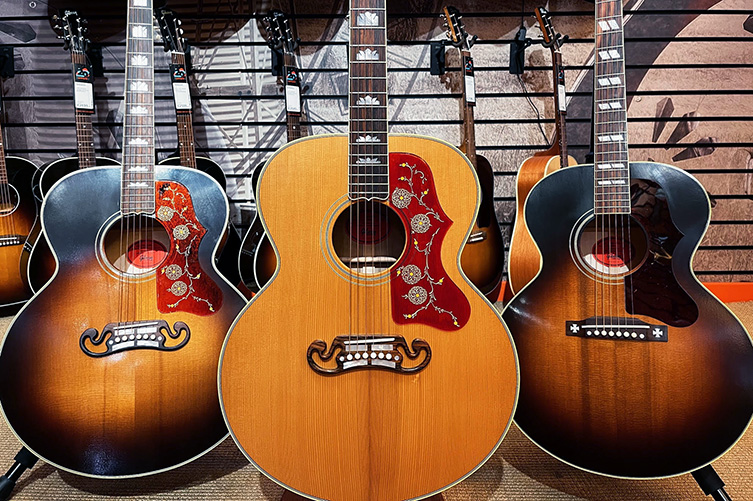
Are you ready for some serious eye candy?
Gibson 1957 SJ-200
Let’s start with the world’s favourite Jumbo, the SJ-200. Or, in Gibson’s parlance, Super Jumbo, though this guitar has actually had a number of name changes over the years.
Indeed, in 1937 when it was released, this model was known simply as the ‘Super Jumbo’. (Some reports say it was 1938: internet sleuths please feel free to dig!)
In 1939, the name became the Super Jumbo 200, the numeric coming from the US price in dollars. This, fact fans, was also how the ES335 got its name! Anyway, in 1957 it became the J-200 and even though that’s perhaps its most-used moniker, the official name these days is SJ-200.
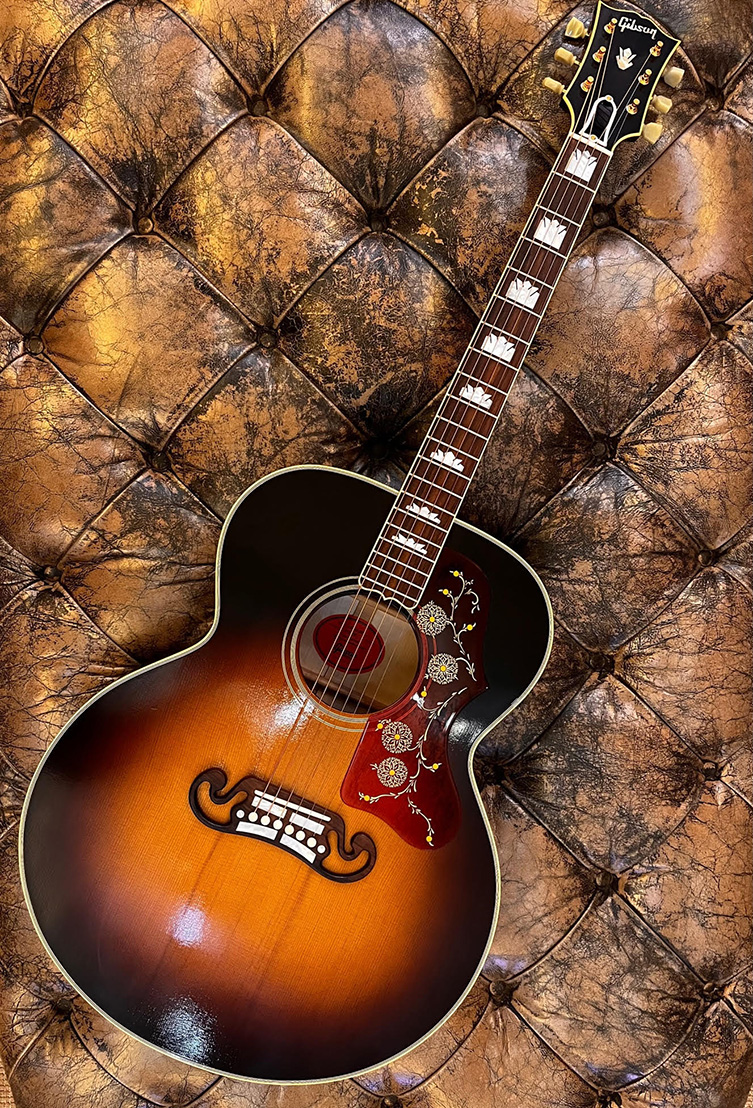
Now, all of this history has a point: in 1947, Gibson changed the timber choice of the back and sides from rosewood to maple, and this combo (spruce for the top) gave what is generally considered to be the greatest SJ-200 sound in the guitar’s history.
Indeed this is why the reissue focuses on 1957: in the early 60s, certain details of the bracing were changed, which made the guitar sound significantly different. Not worse, but as I mentioned, aficionados single out the 1947-57 period as the greatest for the SJ200.
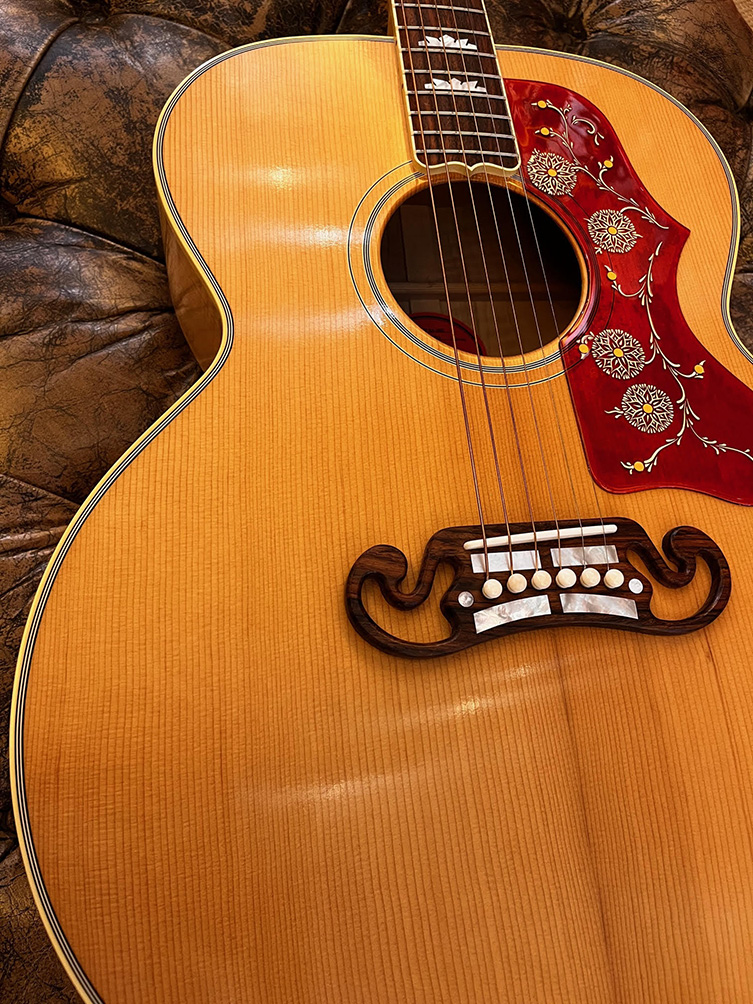
In many ways, this is the ultimate Gibson acoustic for performing songwriters. It’s a big beautiful thing to behold, and the sound is large, expansive, percussive and it projects particularly well. A thermally aged spruce top adds significantly to the sound of this guitar - and the other models today - because the process of torrefaction (treating the timber to high, smoke-free temperatures) dries the wood, producing a very rich, strident sound. It’s the sound of heirloom guitars that have had a century to dry naturally, but these thermally aged tops can give you the sound now, and it really suits the SJ-200!
The thermal ageing also gives the timber a slightly more ‘caramel’ look, which is stunning when either sprayed Sunburst and left in a natural clearcoat.
Additionally, this historically-minded 1957 SJ-200 has a ‘headstock stinger’, a cool period-correct detail that basically translates as the back of the headstock being painted black. Less obvious on the sunburst model of course (!) but very clear to see on the Natural model.

Gibson 1960 Hummingbird
The Gibson 1960 Hummingbird is a prime example of many people’s favourite Gibson acoustic. A square-shouldered dreadnought, the Hummingbird provides all of Gibson's trademark flash and charisma in a body design that’s arguably the most versatile of them all. Where the SJ-200 is deliriously big sounding, the Hummingbird provides a sound that also fills a room but is perhaps more manageable.
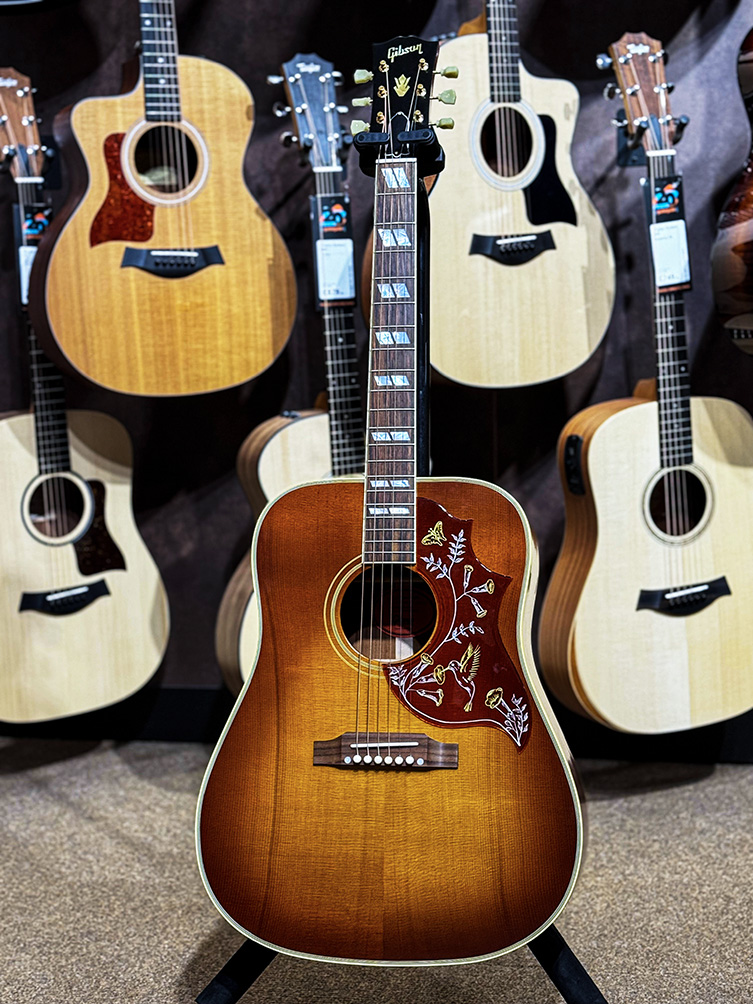
It’s another classic trademark guitar from Gibson and this 1960 Hummingbird reissue is from the model’s first year of production. Central to the particular tone of the Hummingbird is the use of spruce and mahogany, the latter of which helping to deliver that trademark ‘gutsy’ tone. There’s authority there, but sweetness too.
Some people may not realise this, but back in the day, not all Hummingbirds had solid bodies! Some models had laminated backs and sides, and in 1962/3, certain examples even swapped out the mahogany for maple! These elements both change that signature sound, so this explains why Gibson are quoting ‘1960’ for these wonderful reissues, as the spec is not only correct, but the most distinctly ‘Hummingbird’ as you can get.
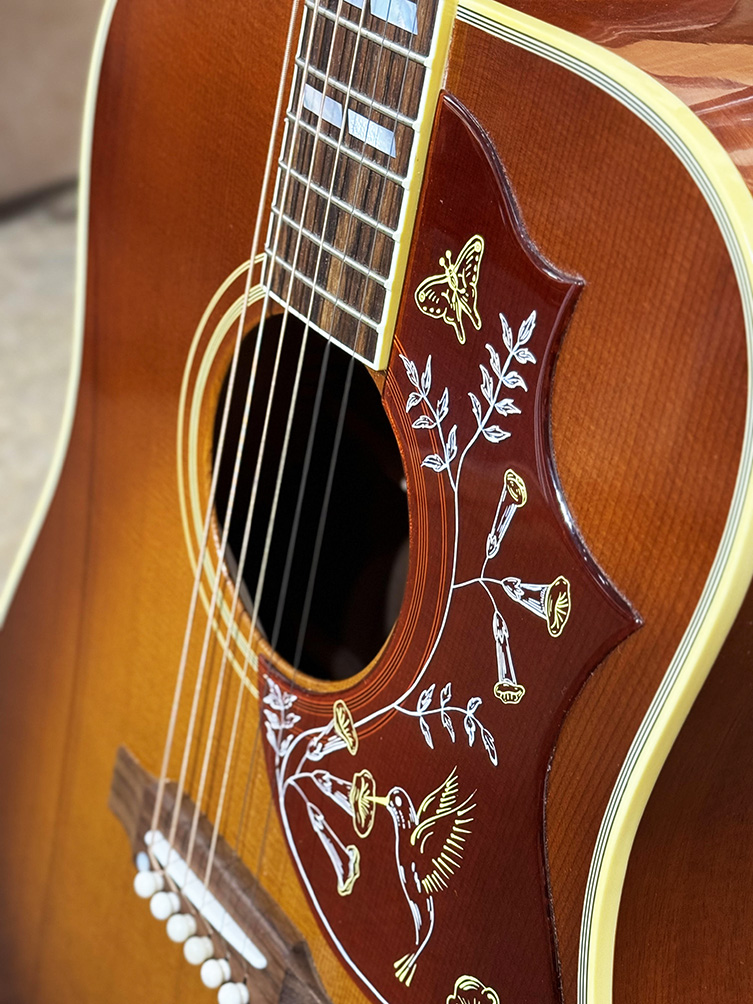
Interestingly, the pickguard shrunk somewhat in the mid 60s, though this model restores the full-sized piece. The top shares the same thermal torrefaction treatment as the SJ-200, so all of those benefits apply here too. The only non-1960 spec I can find here is the nut width, which is every so slightly wider than the 1.63 inches of the original at 1.69 inches. This is Gibson’s standard spec, 43mm, but interestingly, Gibson did enlarge the Hummingbird’s nut width in 1963 to 1.725 inches, so this modern example actually gives us a happy medium between two vintage specs. A good idea, in my opinion!
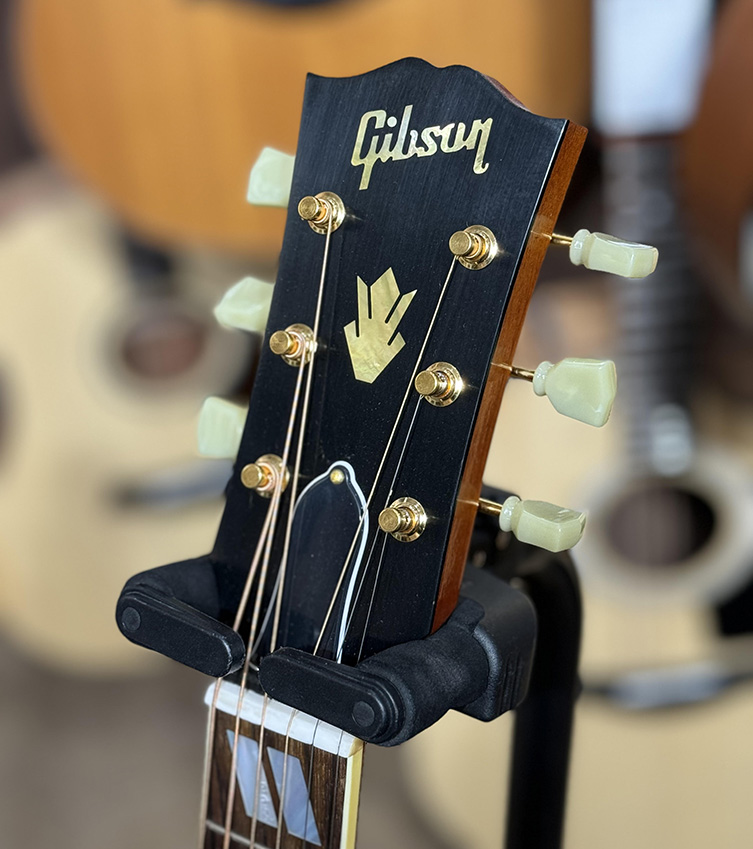
Gibson 1952 J-185
Many people think of the J-185 as a somewhat smaller SJ-200, but that’s not quite right. There already was a smaller SJ-200 - known as the L-200 (I’m presuming the ‘L’ is for either ‘little’ or ‘large’ since large is still smaller than Super Jumbo, right?), so the J-185 deserves to be seen as its own instrument.
The Gibson 1952 J-185 is an excellent recreation of a pretty unique guitar. Really, there is actually nothing else like it out there, and as such is pretty special! Why so though? Let me tell you…
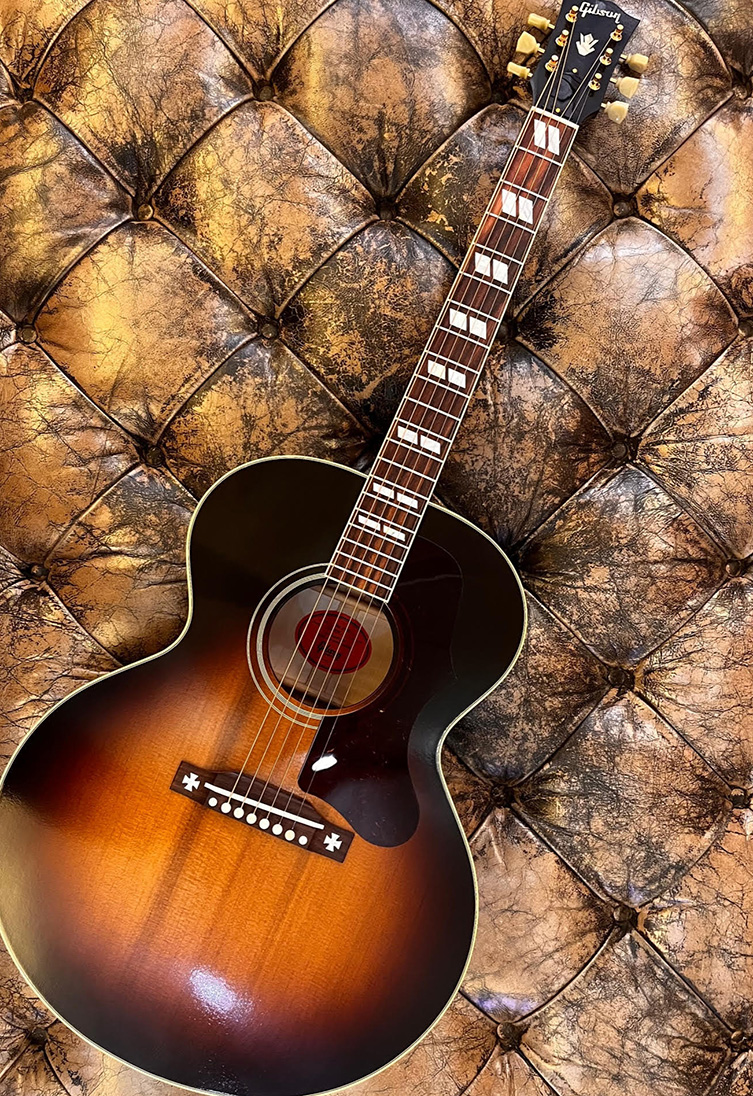
Starting with the SJ-200, that guitar is a Super Jumbo with a scale length of 25.5” and has a 17” wide body. The J-185 is an inch less wide (weird fact: it’s the same size as the electric ES-175, apart from the cutaway!) and uses Gibson’s standard 24.75” scale length. It also has spruce and maple (flame maple on these reissues!) but the timbers themselves are cut a little thinner, as they were in 1952, so the guitar is altogether more resonant.
Talking about size, Gibson reduced the depth of the body in 1955, so this 1952 model returns to the slightly fuller thickness, which is still a little less deep than an SJ-200, as you’d expect.
If the SJ-200 is just a little too large and loud for you, but you love everything else about it, I’d strongly suggest you check out this most unique of guitars, the Gibson 1952 J-185!
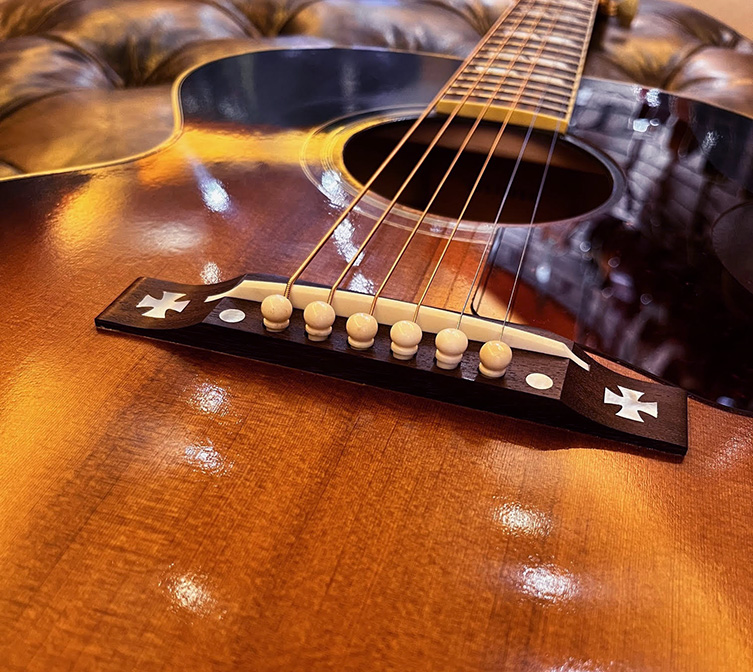
Musical Masterpieces
Each of these guitars is a great advert for Gibson’s acoustic instrument making. Stunningly beautiful, brilliantly playable and each with their own tone, projection and vibe, they are like a Hall of Fame for the brand’s unplugged classics. Play them all today at your local guitarguitar and then face the delightful prospect of having to choose the one you like best! Good luck!
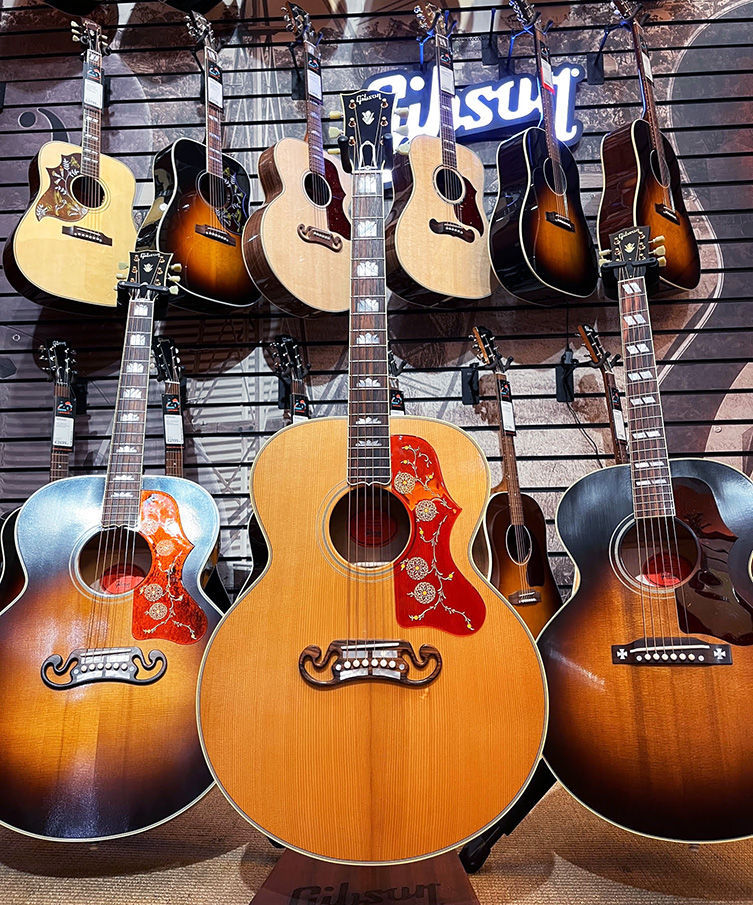
Click to View our Selection of Gibson Acoustic Guitars


